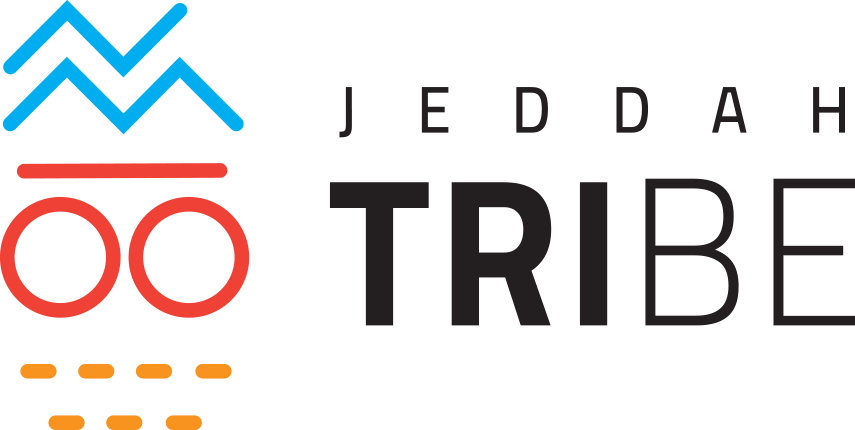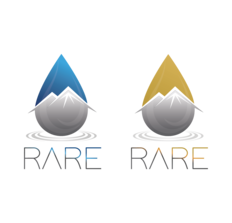
I am thrilled to announce that I have successfully completed one of the most physically intense ventures (Ironman 70.3 Andorra) on August 7, 2022.
I’ll be taking you with me, through this post, to see how my journey unfolded:
Race Course:
1- Swimming:
A two-loop (1.9) km swim course that is located on the incomparable setting of Engolasters Lake, where athletes swim surrounded by lush forest. Engolasters is the highest lake in Europe to host an IRONMAN 70.3 race to date.
2- Cycling
A 90 km cycling route; with a total elevation gain of more than 2000 km.
7km + 2 laps of 36’5km + 10km, this took us from Engolasters Lake to the parish of Escaldes Engordany, where we started a lap that we had to repeat twice which passes through the Encamp, Canillo. We then faced the ascent to the Coll de Ordino, and then descended passing through the parishes of Ordino and Massana to later cross the Tunels dels Dos Valires. From here, we started our second lap with another ascent to the Coll de Ordino. After crossing the Tunels dels Dos Valires for the second time, we went down to Andorra la Vella to reach the Transition Zone located in the Parc Central d’Andorra La Vella.
3- Running
21 Km, that’s a three laps through the main arteries of the country’s capital, Andorra la Vella. We ran parallel to the Valira River before crossing the finish line in Parc Central, the central hub of the Andorra Multisport Festival.
I didn’t know much about Andorra, until I visited it. I then, wished I did earlier!
Andorra is a tiny, independent principality situated between France and Spain in the Pyrenees mountains. It is a Democratic and Social independent State abiding by the Rule of Law. Andorra is co-principality with the president of France and the Catholic bishop of Urgell (Catalonia, Spain) as co-princes. Andorra does not have an international airport. It is a completely mountainous area, so the closest sizeable destination is Barcelona Airport, over the border in Spain.

The Andorran government requires no visa requirements on its visitors.
Andorra is known for its ski resorts and a tax-haven status that encourages duty-free shopping. In summer, athletes from around the world tend to visit Andorra due to the plenty of sport activities that they can enjoy. Such as, cycling, hiking, climbing, trail running, canyoning. Whereas, skiing is very common in winter.
Andorra recorded a total of 5 million tourists in 2020, ranking 36th in the world in absolute terms. Its economy is driven by finance, retail and tourism.
The number of pro cyclists with a base in Andorra is growing all the time. Some factors that makes Andorra appealing for professional riders are, its terrain and climate; having more than 20 mountains of different altitudes makes it very attractive for cyclists of different levels.
(I do recommend it for training camps)
The Race:
This year, my goal was solely to try something different. To indulge into a whole new experience. For a change, considering the fact that all my previous Ironman races were in the Middle East, I started looking for a race overseas which would suit my schedule and not to clash with any work commitment. And hopefully, with the assistance of Google, I found one in Australia, I moved forward and issued the Visa, but unfortunately found out later on that the registration was closed. I, then heard of another Ironman 70.3 in a small country near Spain called Andorra (had never heard of). I got more curious to know more about the country and the race. I knew that the bike course is a bit challenging as athletes are supposed to ride on a mountain of 1900 m height. I thought that would be doable. But then realized that athletes are required to do two laps which means they should cross the same mountain twice in addition to the route leading to the main course. That makes it a total of 2000 m elevation gain. This big number made me feel a bit worried and hesitant as I never did something similar before. A friend of mine Khalid A Yafaie was fortunately visiting Andorra and when I told him about my race plan, he thought it would be great to have me connected with Mishal Nuimi, a Qatari triathlete who was also planning to do Ironman 70.3 Andorra. We met the, he guided me through and accompanied me to the bike course and rode there. I then felt a more relieved knowing that the course is not easy but at least manageable. That proves the saying: (Man is Averse to What He is Ignorant of).
- Swimming:
The swimming course is located in the highest lake that hosts an Ironman 70.3 race to date, situated at 1600m altitude which makes you feel a lack of oxygen when making any effort. The water temperature was 17 degrees Celsius, where swimming is done in a special suit that helps to preserve body heat (wetsuit). The total distance of swimming course is 1900 M (two laps around the lake), and in order to ensure that the contestants complete the two laps, there are a chip mat that has to be crossed twice.

First Transition T1: In order to get from the swimming course to the first transition area, we were supposed to go up a hill that leads to the area where the bikes were parked (around 300 M away). When trying to remove the wetsuit, I made a mistake by not removing the time chip, which made it difficult to have the swim suit taken off. I also had some muscle cramps although I made sure to stay well hydrated especially during the days prior to the race day. I assume that was due to overheating that causes sweating because of the wetsuit. After that, it was time to push our bikes up to the bike course that is situated 300m away. It is worth mentioning that the cycling course was preceded by a hilly terrain, the reason why it took me a bit longer than usual in the first transition (13 minutes).

2.Cycling:
to climb to the top of the summit at 1980 meters
The stage of excitement and LOTS of Adrenaline, A love-hate relationship with this stage. It’s the most mentally hard stage where we had to kick it off with a 7 km descent. And due to the fact that I’ve never cycled in similar road terrain, I kept reminding myself It’s better to be late than sorry. I was super aware of the steep slopes and of all the pro cyclists who were overtaking each other at a breathless pace. On my way downhill, I met a lady from Dubai (BR TEAM), who was also unfamiliar with cycling in such course. After a while of riding downhill, I’ve felt a pressure on my shoulders and on my wrist which I figured out later that had happened because I was constantly holding the brakes. The stage started with 1600m, 1200 m descent followed by an ascent with 1980m, makes it the highest peak point in this route. Passing by a breathtaking, iconic views along the way, made me forget about the struggle. The breezy wind, the sound of a ringing cowbells and the chirping birds, the smell of the fragrant flowers, were all the highlights of this stage.

Second Transition T2
I arrived to the second transition (bike to run) with a big smile on my face that I could finish the cycling leg safely. I soon got off the bike, hoped off, placed the bike on the rack, unbuckled my helmet and finally, pulled my running shoes onto my feet and tied the laces. I also made sure to grab some extra fuel and essential running gear such as the cap, a hand-held water bottle (that was a present from GO BIKE team) and it’s truly a life-saver.
Despite all other triathlon races I have been to, we were provided with water in paper cups instead of bottles at the aid stations which makes it a bit difficult to be carried while running. Hence, grabbing the hand-held water bottle was the best decision I made. Unlike the first transition, I took only three minutes in the T2.

3.Running:
It was a total of three laps, and in all honesty, that was the worst stage in the race in terms of the course choice, where we had to run over uneven pavement, cross streets and side roads all full of traffics. Furthermore, we started the run leg in the noon (hotter and sunnier). Each lap was 7 km long. The first half of the distance was a relatively easy descent. Whereas the second half was less seamless (elevation). I started with a full enthusiasm knowing that running will definitely won’t be as challenging as how cycling was. I paced my self and kicked off. Unexpectedly, during the fifth kilometer, I had muscle cramps in both my right and left thighs which forced me to stop for a while and do some stretching. Because of that, I felt upset and started to see the half empty part of the glass! Here comes the challenge. Here comes the real battle where you’re both mentally and physically exhausted. Once you realize that you’ve the ability to change your mindset and become conscious of that inner voice, turn it off, replace it with more positive thoughts, and get ready to win the game. I immediately shifted my thoughts and started recalling all the motivational wishes and prayers from my beloved ones. I also thought of our mentor, the president of Saudi Triathlon Federation, Eng. Ali Maqbool, who recently completed full Ironman distance (both mentally and physically tough race). These things have given me the power and resilience to keep going until I finally reached the red carpet, the carpet that ignites the dream within you, the carpet that once you stepped onto, you start thinking about the nearest ironman race to sign up for. Finish line was crossed after 7 hours, 36 minutes and 33 seconds.

Nutrition:
I made sure to properly hydrate and load carb well before this big event. However, on the race day, I lost appetite and I didn’t feel like eating anything. But I made one of my favorite treats. A sandwich that I can literally eat all day! (A Pb, honey and cheese) all mixed and slathered on a slice of a bread. After swimming leg, I still couldn’t eat anything, so I packed the sandwich along with the power gels and protein bars, not to forget the banana, of course! (cyclists’ favorite fuel). I ate the banana after the first climb, and left the sandwich after finishing the second climb as a way to reward myself, and believe me, it was the most delicious sandwich I ever had. I was glad I packed it with me during this tough stage.
I also have made sure to frequently get electrolytes and power gels until the finish line was crossed. A Bolivian friend of mine, who I’m uber lucky to know, (Mr. Pablo) had offered me a game changer energy chewable tablets (Glukos), they are excellent and I highly recommend them.

Mistakes, or let me put it into different words, lessons learned:
- In the first transition area, make sure you take off the time chip before taking off the wetsuit and remember to put it back again before you proceed to cycling.
- Try on the race belt beforehand. Mine was totally worn out and uncomfortable. I had to stop while running to adjust it.
- Don’t wear the wetsuit too early. Leave it until the time of the race as to prevent sweating.
- Hydration, hydration, hydration.
To wrap-up:
More than 700 signed up for this race, around 600 who showed up and participated. However, only 478 have crossed the finish line. This shows how challenging this race was. With the grace of God, I could have done this. I’m also incredibly thankful to the president of Saudi Triathlon Federation, Eng. Ali Maqboul, and all the sport communities for their support that made this possible.

Yours Truly,
Waleed Al Kuwaiz – 2022






